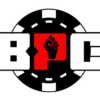Bet sizing in Omaha is both easy and difficult at the same time. Since the game forces players to make limited bets by the default betting rules, you won’t often run into huge pots. With the smaller size of an average pot comes smaller bet sizing, but it should still remain proportionate. PLO is a tricky game because you need to keep pot size in mind, but also need to either get your opponent to commit to the pot or push them out of the way.
It can be tough to force a fold when your bets need to remain small all the way through to the river. Likewise, extracting value is hardly an easy task. Actual bet sizing in Omaha is anything but streamlined. You still need to know what your goals are, how your opponents play, and where you stand in the hand if you want to make bets that actually accomplish their mission.
PREFLOP BET SIZING
Preflop bet sizing is much easier than post flop, as is often the case with any form of poker. If you have a monster hand, the standard play is to continue raising the size of the pot until you are all in. There is no option to make larger 3-bets than the size of the pot, so it can take a lot of bets before all of the money is actually in the middle.
Now, you know what to do when you are actually making the raises, but what about when you simply want to see the flop? Hands where you want to play postflop are generally easy to play because pot limit games allow for maximum pot control. The remaining challenge with pot control is knowing how your opponents are going to react. If you don’t have a good idea what anyone else is going to do, it won’t much matter what you hope is going to happen.
If you want to get to the flop and play your hand from there, the obvious play is to flat call any action initiated by the other players at the table. The way you determine whether your hand is worth calling a raise is by analyzing and considering how large the bets are ahead of you.
For example, you might want to call one raise with 99JQ, but it could be an easy fold if someone else re-raises. The key to bet sizing here is no so much making actual bets, but instead controlling the bets made by other players (also read our article about Omaha preflop hand selection).
POSTFLOP BET SIZING
Postflop bet sizing is when things will start to get fuzzy. The hardest aspect of post flop bet sizing in Omaha is knowing whether you can push your opponent off their hand when bluffing, and how to extract the most value possible when you have something strong. Omaha players often approach the game with the mindset that they are either going to go all the way or get out as soon as possible.
As a result, you need to figure out how to string along players who will be tempted to ditch their hand.
Be careful to string them along in an attempt to make money, but don’t keep it so cheap that they decide to chase and catch up.
Putting your opponents on a hand is the first step to making post flop bets in Omaha. If you can assume that your opponent has a small full house and you have a nut full house, the play would be to keep firing away monster bets. On the other hand, a player with a flush vs. your full house would be able to fold if you scare them away with sizable bets.
The key to making consistent and effective bets in Omaha is knowing just how far to push the envelope.
In NLHE, players will be tempted to chase with almost anything, but in Omaha players are more likely to fold. Gauge your opponents carefully and bet sizing will be infinitely easier. Always keep in mind that your opponents will either latch on or hop off of their hands, usually early on, so your bets should aim to either suck them in right away or convince them to move on.



